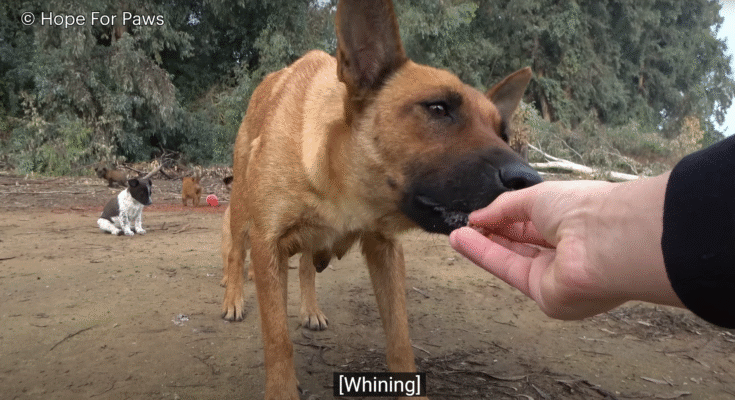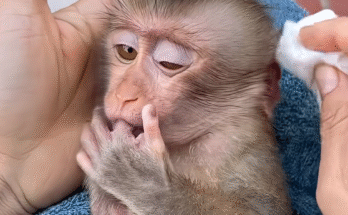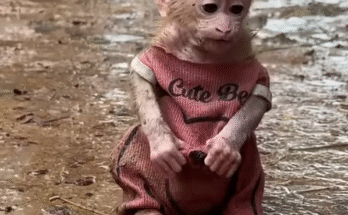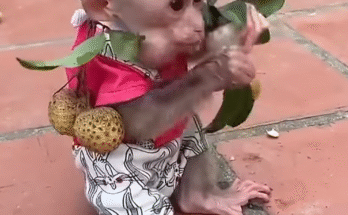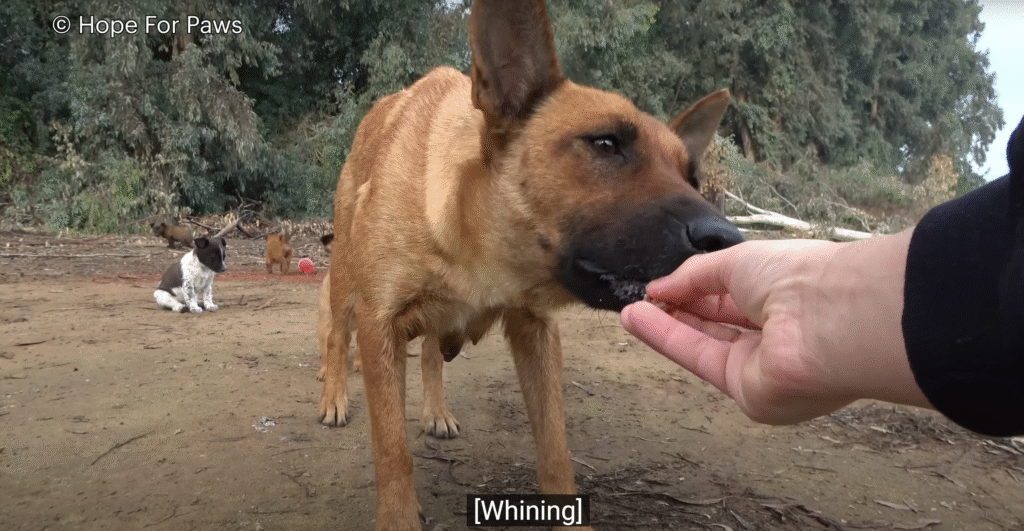
In the early hours of a chilly morning, our animal rescue team received a call about an injured dog wandering near the outskirts of the city. The dog was limping, her paw swollen and covered in scrapes, and she looked utterly exhausted. Reports from nearby residents indicated she had been wandering for days, avoiding humans, and surviving on whatever scraps she could find. We knew this rescue would be tricky, but we also had a secret weapon: a GPS tracker.
The plan was simple but critical. We needed to understand where the dog had been spending her time, especially since she seemed to be in pain and avoiding help. With the GPS tracker attached carefully around her collar, we allowed her to roam for a few hours, keeping a safe distance. The tracker would provide live updates of her location, which was crucial because injured dogs often hide in places that are difficult or dangerous for humans to access. Little did we know, this decision would lead us to an incredible discovery.
As the day progressed, the tracker sent data points indicating that the injured dog had moved away from the open areas and into a densely wooded section behind an abandoned warehouse. The path was narrow, overgrown, and littered with debris, making it nearly impossible to follow by foot without alerting her. Our team monitored her location, noting the GPS coordinates and planning a careful approach. The dog, wary and in pain, continued moving steadily, clearly heading somewhere purposeful.
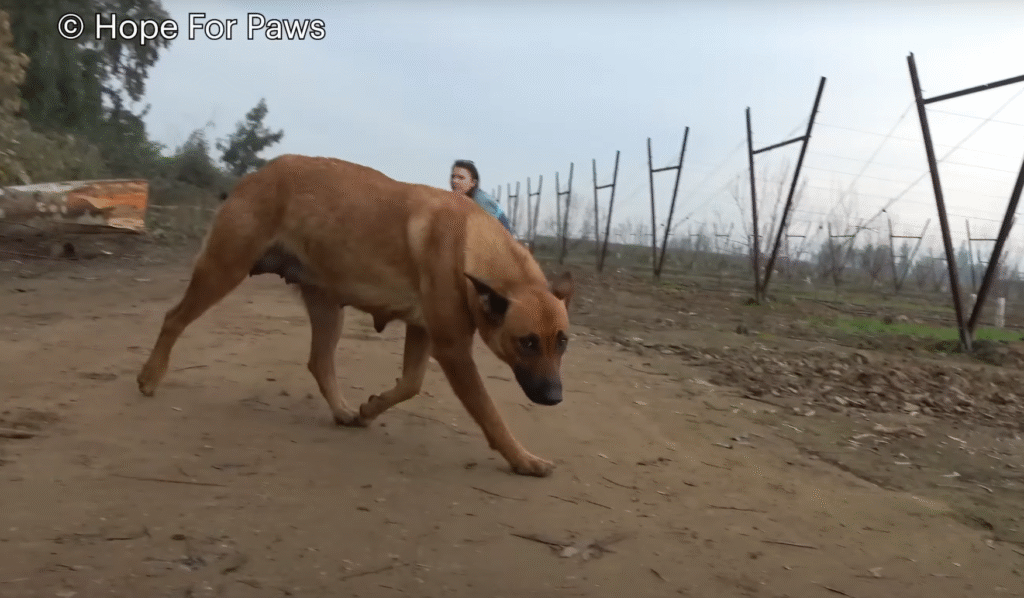
When we finally reached the GPS location, we found the injured dog in a small clearing, limping but alert. She looked at us cautiously, her body tense but not aggressive. We approached slowly, speaking in soft, soothing tones, and offered some food. Hunger outweighed fear this time—she took a few cautious bites and allowed us to observe her injuries. It was clear she needed immediate care, but before we could move her, something caught our attention: she seemed anxious, constantly looking over her shoulder and making soft whining noises.
Following her gaze, we noticed a small entrance partially hidden under thick brush. It was barely visible, yet her eyes seemed fixed on it. Something inside must have been drawing her attention. We decided to investigate, carefully moving the branches aside. To our surprise, we found a den, not much bigger than a cardboard box, tucked under a pile of fallen leaves and branches. And inside that tiny, hidden space were several newborn puppies, huddled together for warmth and protection.
Our hearts sank and soared at the same time. Here was the injured dog, risking her own safety to care for her puppies, and there they were: tiny, vulnerable, and completely dependent on her. Their eyes were barely open, and they were trembling, but the moment they sensed their mother’s presence, they nuzzled against her. It was a moment of pure maternal instinct, a testament to the strength and courage of this dog who had survived against all odds.
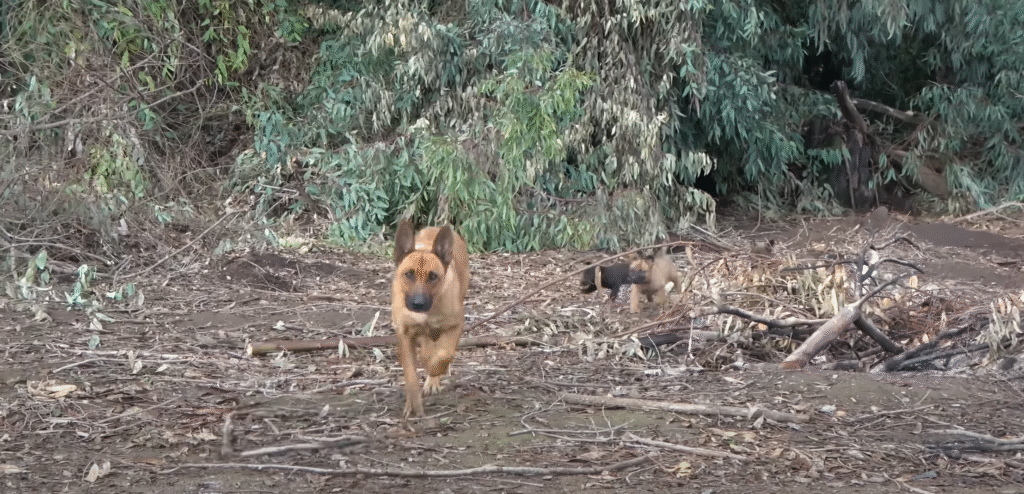
We knew we had to act carefully. The mother dog was injured and frightened, and the puppies were delicate and defenseless. Any sudden movement could cause panic or stress. Our first step was to provide some immediate nourishment to the mother while maintaining a safe distance. Once she ate, her attention shifted to her puppies, and she seemed to relax slightly, allowing us to assess the situation further.
Using blankets and gentle hands, we began the delicate process of securing both the mother and her puppies. The mother dog’s injuries were treated first—scrapes cleaned, her swollen paw bandaged, and her body examined for other potential issues. Meanwhile, the puppies were wrapped carefully to keep them warm and monitored for signs of dehydration or malnutrition. It was a long and careful operation, but each step was necessary to ensure the safety of the entire family.
Once the mother and her puppies were safely transported to our rescue center, the real work of rehabilitation began. The mother dog, who we named Hope, slowly started to recover. Her energy returned, her coat began to shine again, and her demeanor softened as she realized she was safe. The puppies, all six of them, thrived under her care, nursing steadily and gradually gaining weight. Each day brought noticeable improvement: tiny tails wagging, little paws stretching, and the softest of puppy barks filling the rescue center with life and hope.
The GPS tracker had not only led us to a wounded dog but had also revealed an entire hidden family that would have remained undiscovered otherwise. Without it, Hope and her puppies might have continued to live in the woods, facing starvation, predators, and the dangers of human interference. Technology combined with compassion had literally saved lives, proving that innovation can play a crucial role in animal rescue.
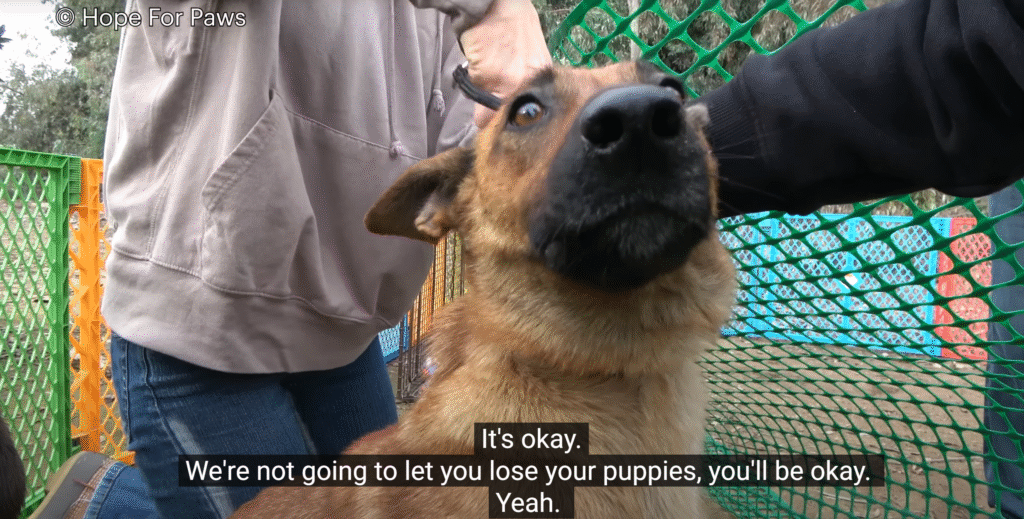
As the weeks passed, we began the process of socializing the puppies. They learned to interact with humans gently, played with toys, and began exploring their environment under careful supervision. Hope remained a vigilant mother, watching over her litter and even allowing volunteers to handle the puppies when she felt safe. Her resilience and strength were remarkable—despite her injuries, she demonstrated patience, nurturing instinct, and an incredible capacity for trust.
Soon, the story of Hope and her puppies spread across social media, capturing the hearts of people everywhere. Photos of the tiny family, nestled together in their new safe space, inspired countless messages of support, donations for supplies, and inquiries about adoption. People were moved not only by the puppies’ cuteness but by the bravery and dedication of their mother. It became clear that Hope’s story was not just about rescue; it was about courage, maternal instinct, and the incredible bond between a mother and her children.
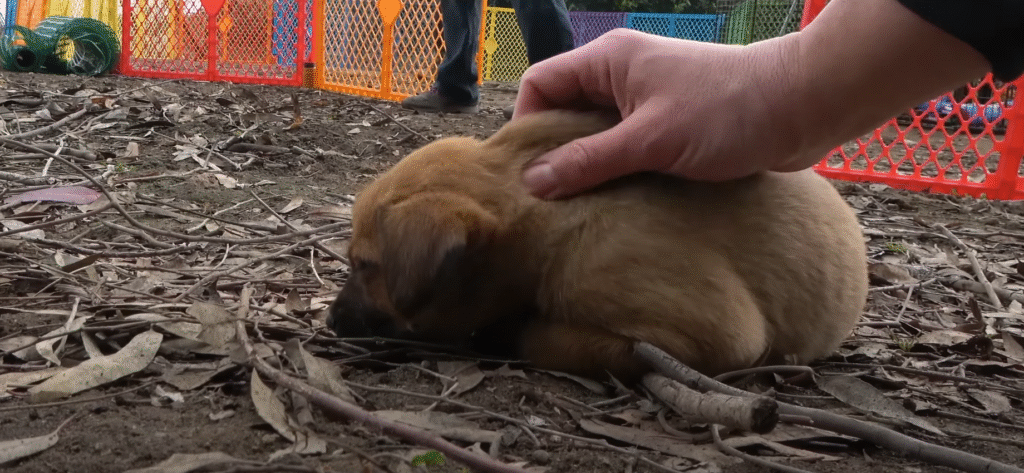
Adoption day finally arrived for the puppies. Each one was matched with a loving family who promised care, attention, and love. The moment the tiny dogs left for their forever homes was bittersweet—an emotional mix of joy and farewell. Hope, now fully healed, remained at the rescue center, gradually adapting to life without the immediate pressure of caring for newborns. She formed strong bonds with the volunteers and staff, showing a trusting and affectionate side that had been hidden for so long.
The experience of rescuing Hope and her puppies highlights several important lessons. First, it demonstrates the power of perseverance and observation. The GPS tracker allowed us to monitor and follow the injured dog without frightening her, ultimately revealing her secret den. Second, it shows the incredible maternal instinct of animals, who prioritize the safety and well-being of their young above their own needs. Finally, it underscores the importance of community involvement in rescue operations. Without the vigilance of nearby residents and the dedication of our team, this family may never have survived.
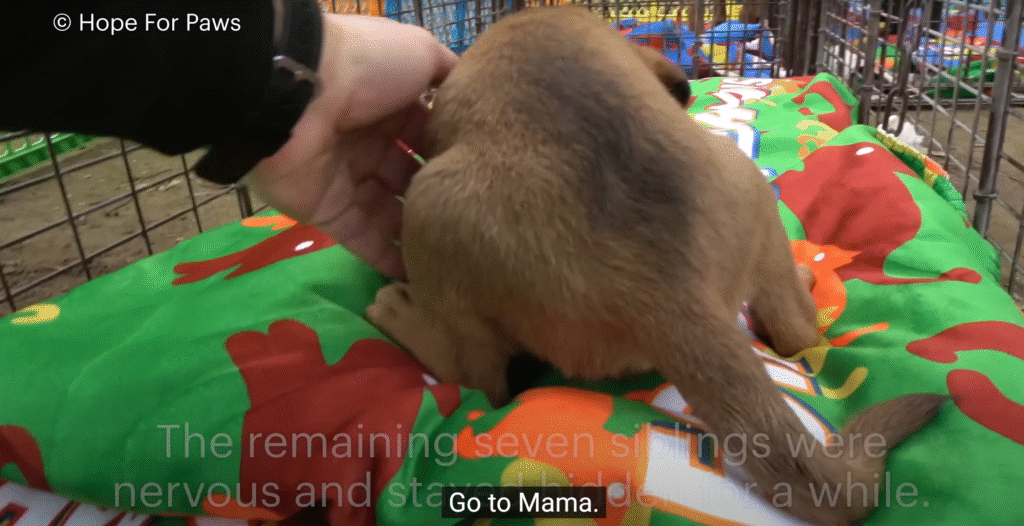
Today, Hope enjoys a calm, loving environment where she is free from danger and pain. Her days are filled with affection, walks, and treats, and she has become a favorite among volunteers and visitors. The puppies, meanwhile, are thriving in their new homes, full of energy, curiosity, and joy. Their survival is a direct result of the quick thinking, technology, and compassion that guided the rescue from start to finish.
In the end, the GPS tracker was more than just a device—it was a lifeline. It led us to a hidden den, uncovered a family in desperate need, and allowed a mother and her puppies to find safety, health, and love. The story of Hope and her litter is a heartwarming reminder of resilience, the power of technology in compassionate hands, and the profound bond between a mother and her children.
Rescues like this inspire us to keep looking, keep caring, and never give up hope. One injured dog led us to a den full of puppies, and in the process, showed the world that even in the darkest, most hidden corners, life, love, and hope can be found. The GPS tracker simply helped us find them, but it was compassion, patience, and human kindness that gave them a second chance at life.
